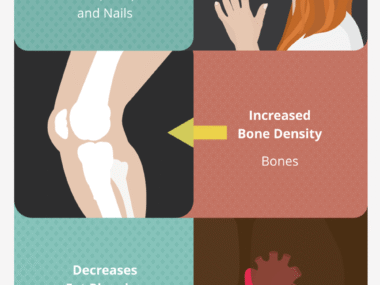Chronic obstructive pulmonary disease (COPD)
Chronic obstructive pulmonary disease (COPD) is a common and debilitating respiratory condition that affects millions of people worldwide. Characterized by progressive airflow limitation and inflammation in the lungs, COPD encompasses chronic bronchitis and emphysema. With symptoms ranging from breathlessness and coughing to frequent respiratory infections, COPD significantly impacts the quality of life and can be life-threatening if left untreated.
What is COPD?
COPD is a long-term lung disease that affects the airways and air sacs in the lungs. The condition is primarily caused by exposure to harmful substances, most commonly cigarette smoke, but can also be caused by environmental pollutants, such as air pollution and chemical fumes. Over time, the inflammation and damage to the airways result in a narrowed passage for air to flow in and out of the lungs, leading to difficulty breathing.
There are two main types of COPD: chronic bronchitis and emphysema. Chronic bronchitis is characterized by the inflammation and narrowing of the bronchial tubes, leading to excessive mucus production and a persistent cough. Emphysema, on the other hand, involves the destruction of the air sacs in the lungs, reducing the lung’s ability to transfer oxygen to the bloodstream.
Causes and Risk Factors of COPD
The primary cause of COPD is cigarette smoking. The toxins in cigarette smoke cause inflammation and damage to the airways, leading to the development of COPD. However, it’s important to note that not all smokers develop COPD, and non-smokers can also develop the disease. Other risk factors for COPD include exposure to secondhand smoke, occupational exposure to pollutants such as chemicals and dust, and genetic predisposition.
Smoking is the leading cause of COPD, accounting for approximately 80-90% of cases. The risk of developing COPD increases with the number of cigarettes smoked per day and the duration of smoking. Quitting smoking is the most effective way to prevent further damage to the lungs and slow down the progression of the disease.
Symptoms of COPD
The symptoms of COPD can vary from mild to severe and may develop gradually over time. The most common symptoms include breathlessness, chronic cough, increased mucus production, wheezing, and frequent respiratory infections. As the disease progresses, these symptoms can significantly impact daily activities and quality of life.
Breathlessness, or dyspnea, is one of the hallmark symptoms of COPD. It typically worsens with physical activity and can be accompanied by wheezing or a feeling of tightness in the chest. Chronic cough, which may or may not produce mucus, is another common symptom. This persistent cough is often worse in the morning and can disrupt sleep and daily activities.
Diagnosing COPD
Early diagnosis of COPD is crucial for effective management and to prevent further damage to the lungs. Diagnosis is typically based on a combination of medical history, physical examination, and pulmonary function tests. The healthcare provider will inquire about symptoms, smoking history, and exposure to environmental pollutants.
Pulmonary function tests, such as spirometry, are used to measure lung function and determine the severity of airflow limitation. This test involves blowing into a device that measures the amount of air you can exhale and how quickly you can do it. Other tests, such as chest X-rays and blood tests, may also be done to rule out other lung conditions and assess overall health.
Treatment Options for COPD
While there is no cure for COPD, there are various treatment options available to manage the symptoms and improve quality of life. The primary goals of treatment are to relieve symptoms, prevent further lung damage, and reduce the risk of exacerbations.
Medications are an essential component of COPD treatment. Bronchodilators, such as short-acting and long-acting inhalers, are commonly prescribed to relax the airway muscles and improve airflow. Inhaled corticosteroids may also be prescribed to reduce airway inflammation. Other medications, such as antibiotics and mucolytics, may be used to treat respiratory infections and reduce mucus production.
Lifestyle Changes to Manage COPD
In addition to medications, lifestyle changes play a crucial role in managing COPD. Quitting smoking is the most important step to slow down the progression of the disease and improve lung function. Avoiding exposure to environmental pollutants, such as secondhand smoke and air pollution, is also essential.
Regular exercise, under the guidance of a healthcare professional, can help improve lung function and overall fitness. Pulmonary rehabilitation programs, which combine exercise, education, and support, are highly effective in managing COPD and improving quality of life. These programs provide guidance on breathing techniques, energy conservation, and coping strategies.
COPD Exacerbations and How to Prevent Them
COPD exacerbations, also known as flare-ups, are episodes of worsened respiratory symptoms. They can be triggered by respiratory infections, exposure to pollutants, or failure to take medications as prescribed. Exacerbations can be life-threatening and often require hospitalization.
Preventing exacerbations is a crucial aspect of COPD management. This involves avoiding triggers, such as respiratory infections and environmental pollutants, and following a comprehensive treatment plan, including regular medications and vaccinations. It’s important to recognize early signs of exacerbations, such as increased breathlessness or a change in the color or amount of mucus, and seek medical attention promptly.
Living with COPD: Coping Strategies and Support
Living with COPD can be challenging, both physically and emotionally. However, there are coping strategies and support available to help individuals manage the disease and maintain a good quality of life. Seeking support from healthcare professionals, such as respiratory therapists and counselors, can provide valuable guidance and emotional support.
Joining support groups or online communities for COPD can also be beneficial. These platforms allow individuals to connect with others who are going through similar experiences, share tips and advice, and provide a sense of belonging. Learning about the disease, staying informed about new treatment options, and maintaining a positive mindset are essential for coping with COPD.
Conclusion
In conclusion, COPD is a chronic and progressive lung disease that significantly impacts the lives of millions of people worldwide. It is primarily caused by exposure to harmful substances, most commonly cigarette smoke, and characterized by inflammation and narrowing of the airways. Early detection and effective management are crucial for improving outcomes and enhancing the quality of life for individuals with COPD.
By understanding the causes, symptoms, and treatment options for COPD, individuals and their loved ones can take proactive steps to manage the disease and live fulfilling lives. With the support of healthcare professionals, lifestyle modifications, and a strong support network, it is possible to navigate the challenges of COPD and achieve better respiratory health. Together, we can work towards a future where COPD is better understood, managed, and ultimately prevented.










